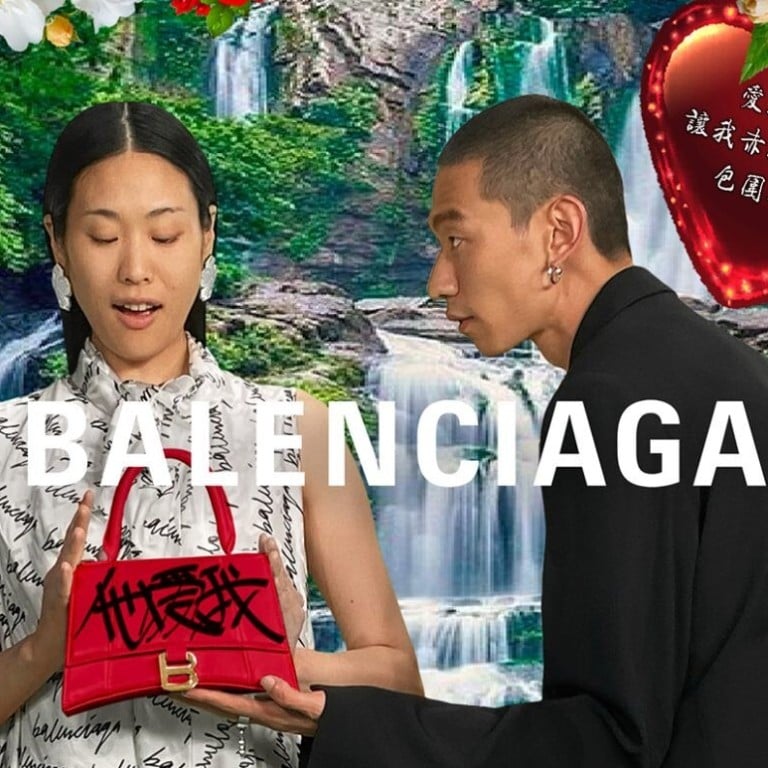Opinion / Was Balenciaga’s Qixi Festival handbag campaign a tasteless insult to China – or have netziens gone too far in condemning western brands?

Following in the footsteps of several other Western luxury brands that upset consumers in China (Dolce & Gabbana and Versace, we’re looking at you) Balenciaga’s latest Hourglass handbag campaign has caused a storm, writes Yaling Jiang, but is the fuss really warranted?
To mark the Qixi Festival (China’s version of Valentine’s Day) on 25 August, Balenciaga released four limited-edition Hourglass handbags at the brand’s Tmall online store. In its campaign picture, a male model hands a red Hourglass handbag with Chinese characters that read “He Loves Me” written on the flap to a female model, who looks at the present with awe. The two are standing before a waterfall backdrop that’s flanked by red roses and hearts.
The campaign’s four bags, which come in red, black, pink and white with specially-designed graffiti fonts, exemplify the current “Too Cool” style favoured by certain Gen-Zers but seen by some people as offensive. The bags mimic styles preferred by China’s rural population and have been labelled “tasteless” or even “insulting of Chinese culture” by many netizens while some simply dismiss them as “ugly”.
Very quickly the topic #BalenciagaChineseValentineCampaignTasteless (#巴黎世家七夕广告 土) had garnered over 210,000 discussions and 170 million views on Weibo, and the topic #BalenciagaInsultsChina (#巴黎世家辱华) had over 15 million views and more than 6,000 discussions.

Our take
To stand out in a sea of Qixi campaigns, Balenciaga made a commendable effort to learn what Chinese Gen-Zers find cool and designed a unique font for the handbags instead of simply using an existing one like Dior did with its customisable Book Tote.
Yet, many people still think the brand hasn’t done its homework. While it’s important for brands to do social listening and understand other brands’ cultural missteps, sometimes it’s better to ignore the noise. After all, a luxury brand wasn’t born to be led by public opinion – its job is to set trends.
This article originally appeared on Jing Daily as part of The Jing Take column.
Want more stories like this? Sign up here. Follow STYLE on Facebook, Instagram, YouTube and Twitter .